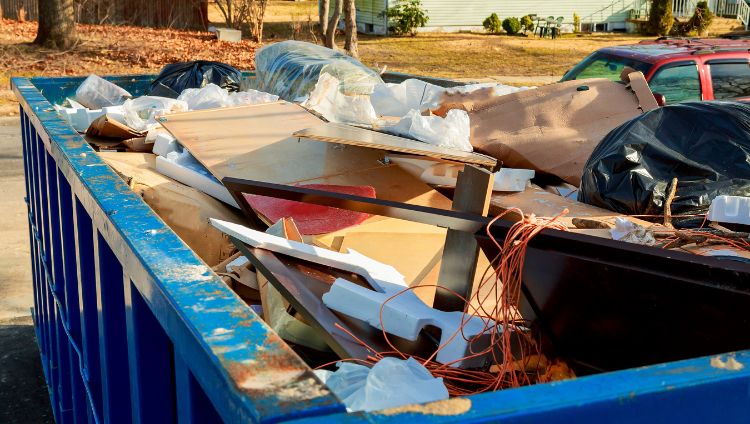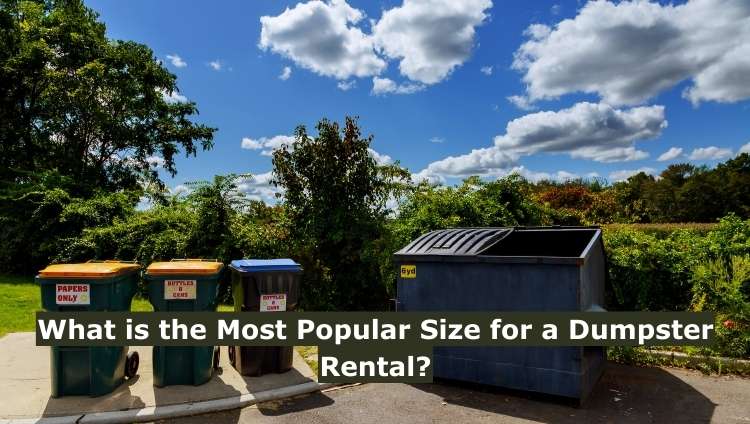Selecting the perfect dumpster size is pivotal for effectively managing waste disposal across various projects. Certain sizes have gained popularity due to their versatility and capacity to handle diverse project types.
Understanding these popular sizes and key considerations ensures efficient waste management tailored to specific project needs, whether it’s a small-scale residential cleanup or a large commercial renovation.
Evaluating factors such as waste volume, space availability, project duration, and local regulations plays a crucial role in making an informed decision.
Dumpster Sizes and Their Uses
10 Yard Dumpster:
A 10-yard dumpster is perfect for small projects like garage cleanouts, bathroom remodels, or yard waste removal. With a capacity of about 10 cubic yards roughly three pickup truck loads
This size is ideal for residential areas where space is constrained, providing an economical option for handling smaller amounts of waste.
You can learn more about this size in our detailed guide to dumpster sizes.
15 Yard Dumpster:
A 15-yard dumpster is a great choice for those looking for versatility. It can hold up to 15 cubic yards of waste, which is roughly the same as 4.5 pickup truck loads.
This size is perfect for medium-sized jobs like renovating a single room or clearing out some clutter, and it fits well in both residential areas and smaller commercial spaces.
For more on the best uses for various sizes, check out our article on how to choose the right dumpster size for your home renovation project.
20 Yard Dumpster:
A 20-yard dumpster, with a capacity of roughly 20 cubic yards (equivalent to about 6 pickup truck loads), is perfect for substantial cleanouts and medium-sized home renovations.
It effectively accommodates basement or garage cleanouts, flooring removal in several rooms, and moderate construction projects, offering plenty of space while requiring minimal placement area.
30 Yard Dumpster:
A 30-yard dumpster, ideal for large-scale projects needing significant waste disposal, accommodates approximately 30 cubic yards of debris, which is roughly equal to 9 pickup truck loads.
It’s often utilized for extensive renovations, major construction jobs, or extensive landscaping projects,especially in commercial settings.
40 Yard Dumpster:
The largest option available, a 40 yard dumpster holds approximately 40 cubic yards of waste, equivalent to about 12 pickup truck loads.
It’s ideal for massive cleanouts, complete home renovations, or commercial construction projects generating substantial debris volumes.
This size maximizes efficiency by reducing the need for multiple hauls and ensures comprehensive waste disposal.
Considerations for Choosing the Right Size of Dumpster
When choosing the right size of dumpster for your project, several key considerations should guide your decision-making process:
Accurate Waste Estimation:
It’s crucial to estimate the amount of waste or debris your project will generate accurately. Overestimating can lead to paying for unnecessary capacity, while underestimating may result in additional fees for overfilling or needing an extra dumpster.

Space Requirements:
Evaluate the space available for placing the dumpster. Various dumpster sizes need different amounts of space. Make sure there is sufficient room on your property or at your project site to fit the dumpster without blocking access or breaching local regulations.
Type of Waste:
Project Timeline:
Determine the duration of your project and how long you will need the dumpster. Rental periods can vary, and exceeding the agreed-upon rental period may result in additional charges. Coordinate with the dumpster rental company to match the rental duration with your project timeline to avoid unexpected costs.

Local Regulations and Permits:
Check local regulations regarding dumpster placement, permits required for placing a dumpster on the street or in a public area, and any specific rules regarding waste disposal. Adhering to these regulations ensures compliance and avoids fines or delays.
Learn more about local rules and regulations with our waste management dumpster rules guide.
Budget Considerations:
Evaluate the costs of various dumpster sizes and rental durations to select an option that fits your budget while offering sufficient capacity.
Many dumpster rental companies offer flexible pricing and can help you choose the most economical size for your needs.
Taking all these factors into account will help you make an informed choice about the best dumpster size for your project.
Additionally, Consulting a reputable dumpster rental service can provide expert advice and support, ensuring effective waste management that meets your specific project requirements.

Frequently Asked Question
What is the most popular size for a dumpster rental?
The most popular sizes range from 10 to 40 cubic yards, catering to various project scales from small residential cleanouts to extensive commercial projects.
How do I choose the right dumpster size for my project?
Consider the scale and scope of your project, anticipated debris volume, and specific waste types to select a size that efficiently manages waste without overfilling or underutilizing the dumpster.
Are there restrictions on what can be placed in a dumpster?
Dumpster rental companies typically prohibit hazardous materials and specify proper disposal methods for electronics or appliances. It’s essential to review guidelines to ensure compliance and avoid additional fees.
How long can I rent a dumpster for?
Rental periods depend on project needs and provider policies. Short-term rentals suit weekend projects. Longer rentals work for extensive renovations. Discuss rental periods with providers to align with your project timeline effectively.
What factors should I consider when choosing a dumpster size?
Evaluate the volume of waste generated. Consider any space constraints at the site. Review local regulations on dumpster placement and disposal. Factor in your budget for the rental. Choose the dumpster size that fits your project needs.
Conclusion
Choosing the right dumpster size is critical for ensuring efficient waste management and cost-effective disposal during any project.
Choose from popular dumpster sizes (10–40 cubic yards) to meet your waste disposal needs for residential, construction, or commercial projects.
A reputable rental service can guide you to the right size based on your project and regulations.
This ensures efficient cleanup, responsible waste disposal, and supports sustainability and compliance.


